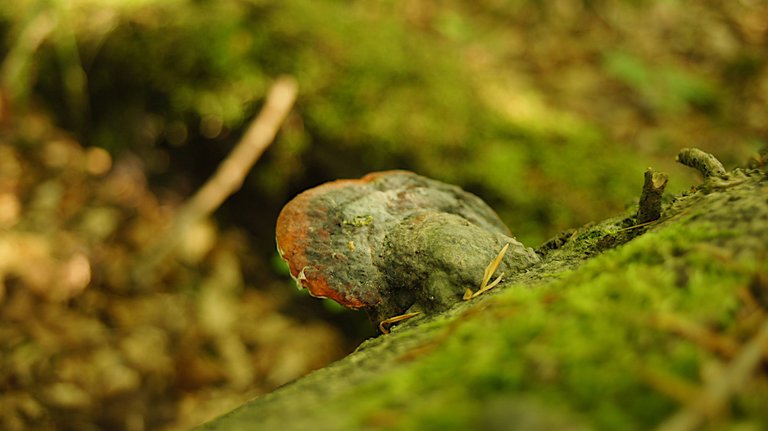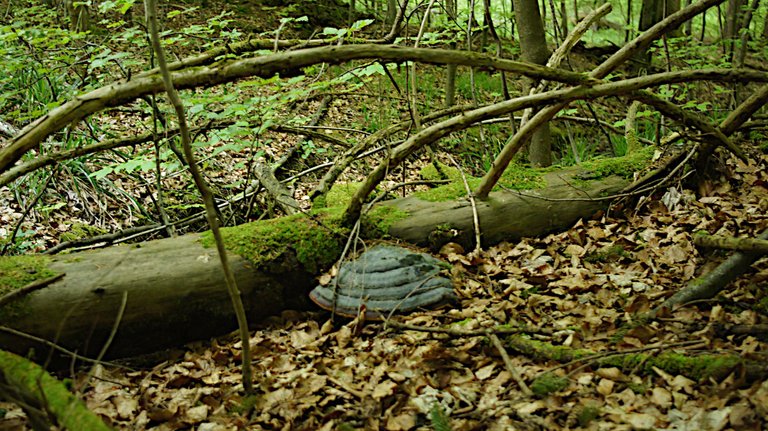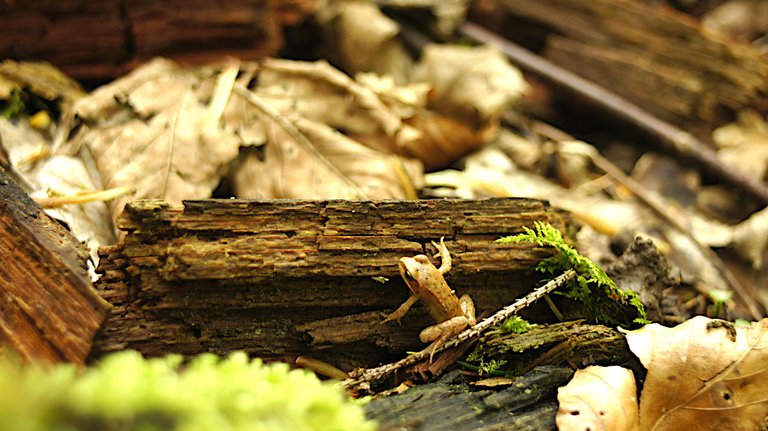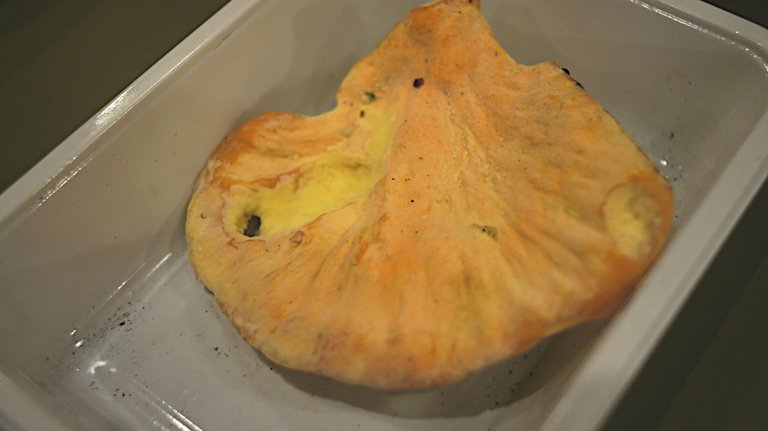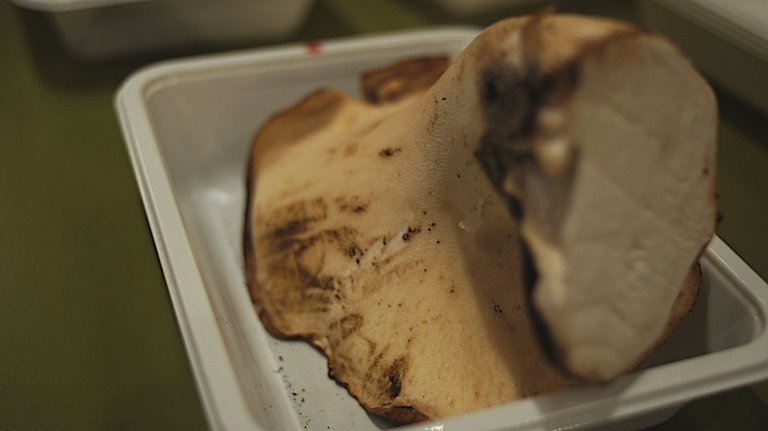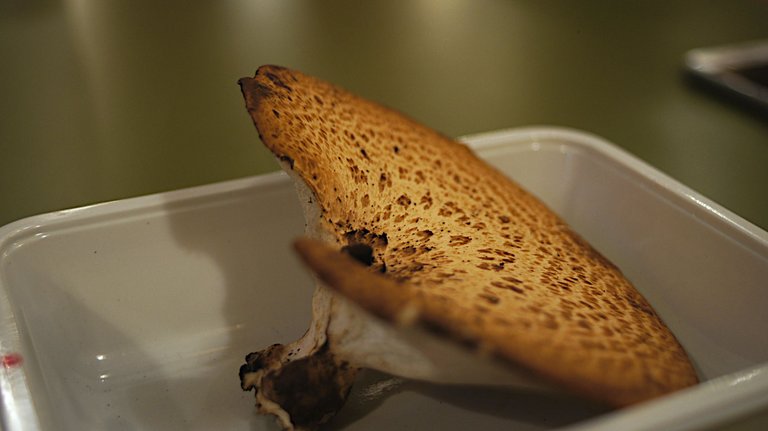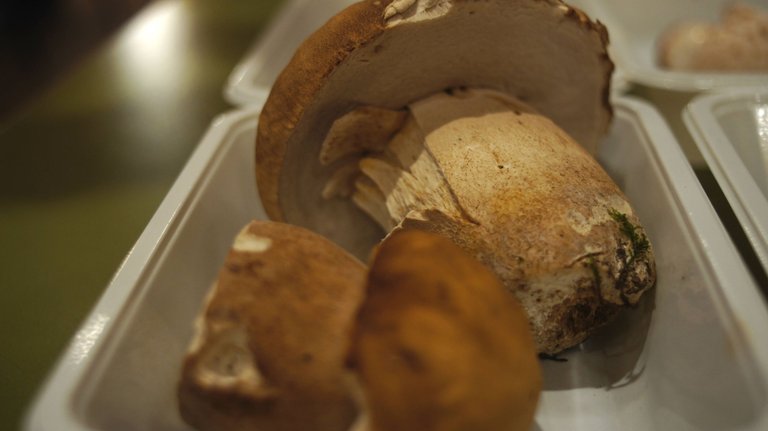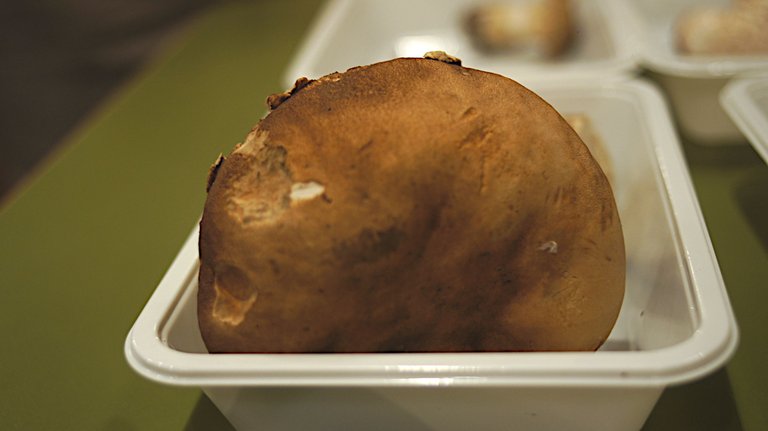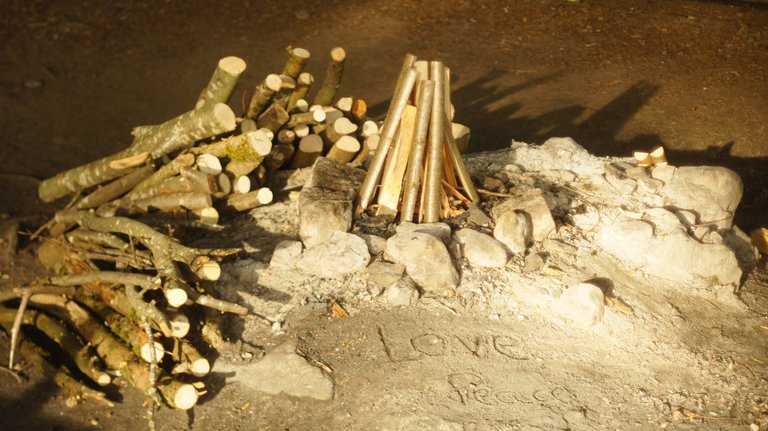Sony Nex vg-10, 105mm f/2.5
Introduction
Dear FungiLovers Hivemind
Finally we reached 10 Mushroom Protocols covering a bit more than 30 Mushrooms and intriguing implication of mycological studies on various sciences.
Firstly I'd like to start by sharing this amazing video I saw a few years back, but that @baqabond shared with me a few days ago.
It really describes how I think about mycelium.
I don't just think they closely resemble brain neurones, but are of a higher biological intelligence. I am also convinced that the gentle trees and symbiotic mycelial relationship make up a super-organism that we should tune into, observe, respect, begin to appreciate, give more credits and observe mindfully.
Since a few years i'm completely fascinated by gymnosperms, that give rise to conifers, cycads, Ginkgo, and gnetophytes. In their biome or habitat it feels like being surrounded by a bubble of alpha pinene's, but also as if a meteorite spread it's spores and it's created offspring. Like an alien life form or organism.
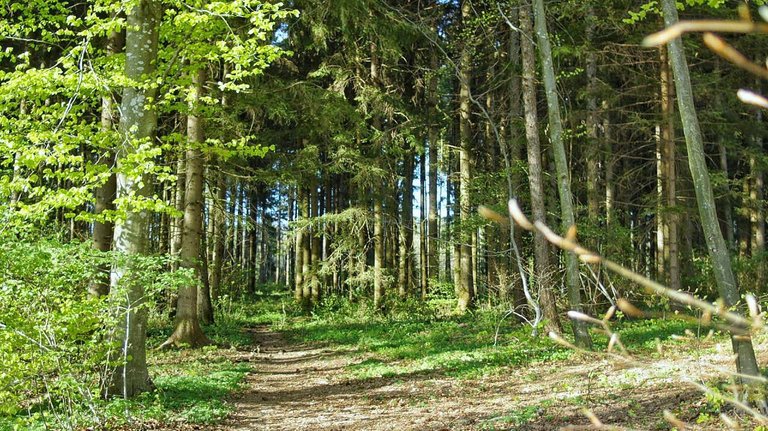
Briefly mentioning Ecto- and Endosymbiosis, I am currently trying to understand arbuscular mycorhizzas. The complex signalling that occurs at the epidermis with the hypodermis or the endodermis. The mutualistic exchange through the cellular lumen of cortical cells, that interacts with the machinery of the plant host. This is a dedicated molecular-genetic program of biosynthesis and it's intracellular symbiosis releases fungal spores that colonise plant root cells. Once they germinate to form hyphopodia (or appressoria) at the root surface, inter- and intracellular penetration then follows by hyphae. The intracellular structures that then form are called “arbuscules”. The protein synthesis that happens at that level of such a mutualistic symbiosis is called the root nodule symbiosis (RNS). Cellular coordination and the establishment of the symbiotic interaction is highly interesting. The biofilm on the surface of hyphae has a microcosmos that are involved in this signalling process that still has yet to be elucidated by science.
Here I am, back again talking about the complex interaction between microbiota and a mycobiome on a surface, trying to point to the beauty of mutualism and a holistic approach of thought to picture such processes.
Vegetation and their symbionts have coevolved over a long period of time to make up vital components of our terrestrial ecosystems. We have the tendency to temper with certain components of such ecosystems and disrupt these processes before even understanding how crucial they are.
I've been hanging out with @harijan and doing a lot of barefoot walking in the forests, trying to pay close attention to each step, trying not to disturb. It's interesting what one discovers while being mindful.
Recap
In my previous post Mushroom Protocol 09 , we went over 3 mushrooms.
Namely:
- The Daldinia Childiae, Carbon balls
- The Formitopsis pinicola, red-belted conk
- The Stereum subtomentosum, Yellowing Curtain Crust
So far we covered:
- The Scleroderma citrinum or earthball
- The Craterellus cornucopioides or horn of plenty
- The lycoperdon or puffball
- The Boletus calopus, bitter beech bolete or scarlet-stemmed bolete
- The Hygrocybe punicea, Crimson or waxycap
- The Hypholoma fasciculare, sulphur tuft
- The Hericium Erinaceus, Lion's Mane
- The Gyroporus castaneus, chestnut bolete
- The Stabilomyces Stabilaceus, old man of the woods
- The Hydnum repandum, hedgehog mushroom
- The Hericium Erinaceus, Lion's Mane
- The Coprinopsis atramentaria, ink cap
- The Hericium cirrhatum, tiered tooth fungus
- The Armilliria ostoyae, Dark Honey Fungus
- The Laccaria Amethystina, amethyst deceiver
- The Omphalotus illudens, eastern jack-o'lantern
- The Armilliria ostoyae, Dark Honey Fungus
- The Laccaria Amethystina, amethyst deceiver
- The Omphalotus illudens, eastern jack-o'lantern
- The Clitocybe nebularis, , Clouded Agaric
- The Amanita Muscaria, , Fly Agaric
- The Pholiota squarrosa, , shaggy scalycap
- The Clitocybe nebularis, , Clouded Agaric
- The Amanita Muscaria, , Fly Agaric
- The Pholiota squarrosa, , shaggy scalycap
- The Clitocybe nuda,, Wood Blewit
- The Pleurotus ostreatus,, Oyster Mushrooms
- The Lactarius deliciosus, , saffron milk cap
- The Boletellus obscurecoccineus, rhubarb bolete
- The Sarcoscypha austriaca, scarlet elfcup
- The Daedalea quercina, oak mazegill
While identifying mushrooms one should be very careful and consult the advice of a specialist. Mushrooms that aren't identified properly and ingested can cause intestinal stress, could be very toxic or even poisonous. In some cases they can even cause death. This blog content is only for personal and educational purposes and not a guide on mushroom picking.
Mushrooms
Laetiporus sulphureus, chicken of the woods
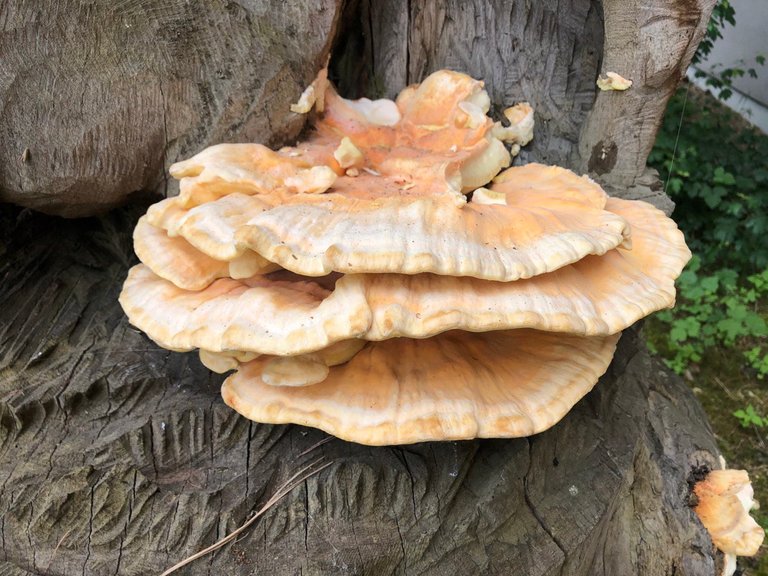
This is literally one of my favourite edible mushrooms. It really also depends very strongly on how you prepare it for cooking and how you spice it. I came across this mushroom several times last weekend and it's really great when it's fresh. It's best harvested around this season, right after the rains here in Switzerland.
| Class | Agaricomycetes |
| Division | Basidiomycota |
| Family | Fomitopsidaceae |
| Order | Polyporales |
| Genus | Laetiporus |
| Scientific Name | Laetiporus sulphureus |
| Appearence | With its strident orange or sulphur-yellow colouring, is hard to miss. Known as Chicken-of-the-Woods or the Sulphur Polypore, this bracket fungus is seen most often on beech, oak, chestnut and less frequently on cherry and other hardwoods. Only rarely are these impressive fungi associated with conifers other than Yew Source |
| Type | Mycorrhizal |
| Medicinal Properties | Chicken of the Woods Mushroom BenefitsThe most obvious benefit of chicken-of-the-woods is that it’s edible, at least while the fruiting body is young (older fruiting bodies get tough and brittle). Not only is it a good vegetarian chicken substitute, but it’s a low-calorie, low-fat, high-protein food. A 100g serving has only 33 calories, but 14g of protein, and it’s a good source of potassium and Vitamin C[v]. Compare that to a serving of chicken breast (the kind with feathers) of the same size, which has double the protein but five times the calories[vi]. Plus, all mushrooms are cholesterol-free, whereas birds are not. Chicken-of-the-woods is considered an exotic mushroom and has a long history of use in folk medicine, especially in Europe. It is known for fighting infections (it has also been powdered and used as snuff)[vii]. Modern research has shown that the mushroom has a large number of biochemical constituents, many of which have medicinal potential—and some are already in use in a variety of products[viii]. The following properties, and others, are either known or suspected for the mushroom: Antioxidant* Antibacterial * Anti-carcinogenic * Hormonal balancing * Dental healthcare * Anti-inflammatory * Diabetes treatment * Antimicrobial Properties Chicken-of-the-woods, or extracts from the mushroom, can suppress the growth of a number of microorganisms, such as gram-positive bacteria, including methicillin-resistant Staphylococcus aureus (MRSA), Candida (a normally benign yeast that can over-grow and cause several human diseases), and Aspergillus flavus, a mold that produces a carcinogenic toxin. Substances isolated from the mushroom can also remove denture and dental plaque and are used in commercially-available dry-mouth treatments. On a less-useful note, one of the bacteria types chicken-of-the-woods can suppress is the one used to ferment both pickled cucumbers and sauerkraut, meaning that the mushroom itself is probably impossible to pickle. Anti-carcinogenic PropertiesBoth chicken of the woods or substances extracted from the mushroom have either suppressed the growth of, or actually killed several different cancers, either in mice or in cultured cell lines in vitro. The cancers involved include stomach cancer, leukemia, lung cancer, breast cancer, melanoma, and liver cancer. One of the substances identified as potentially anti-carcinogenic can now be synthetically produced and is being further investigated. Hormonal Balancing PropertiesOne substance found within chicken of the woods mushroom promotes the creation of estrogen by the body, and could become part of a treatment for health problems involving low levels of estrogen. Another may be able to undo radiation damage to certain bodily processes involving testosterone and androgen, and may thus be useful for cancer patients who have received radiation therapy. Diabetes TreatmentA substance found in chicken and certain other polypore mushrooms increases sensitivity to insulin and also improves several other processes related to diabetes, including reducing blood sugar in animals. The substance has promise as a possible treatment for type II diabetes and related problems, such as obesity. Other PossibilitiesThere are other intriguing possibilities, too. The mushroom contains a substance believed to act as an anti-inflammatory, as well as melanin, which is both a free radical scavenger and may be involved in melatonin production and pineal gland heath. Chicken-of-the-woods inhibits the creation of cholesterol, possibly because of the presence of some as-yet unidentified substance that has a synergistic effect with lovatatin, a naturally-occurring, cholesterol-lowering drug. Research in mice suggests that a deficiency of a substance called CoQ9 causes a specific type of brain impairment; chicken is a source of CoQ9. It is interesting to note that almost all these studies involve substances extracted from the mushroom, not the mushroom itself, and that the research did not involve human subjects. Still, the mushroom has possibilities. Source |
| Culinary | Edible(Laetiporus sulphureus is generally rated as a good edible fungus (unless growing on wood such as Yew, which itself contains dangerous toxins that could be taken up by the fungus); however, it is best picked when young and moist. Source) |
| Habitat | They grow on decomposing branches of fallen ash trees. |

Polyporus Squamosus aka Cerioporus squamosus, dryad's saddle
| Class | Agaricomycetes |
| Family | Polyporaceae |
| Order | Polyporales |
| Division | Basidiomycota |
| Scientific Name | Cerioporus squamosus |
| Common Name | dryad's saddle |
| Appearence | Polyporus squamosus, commonly referred to as Dryad's Saddle, grows in overlapping clusters and tiers on broad-leaved trees. (A dryad is a mythical wood-nymph.) The fruit bodies appear in summer and autumn. Insects quickly devour these large brackets, and in warm weather they can decay from full splendour to almost nothing in just a few days. |
| Type | Saprophytic |
| Odeur | Cucumber. |
| Culinary | Mealy or, if properly cooked, lemony. |
| Habitat | Living and dead hardwood trees. silver and ash-leafed maples in eastern North America, and for quaking aspen in the west. |
| Medicinal Properties | There are no clinically or science backed benefits for the Pheasant Back Mushroom at this time. Most of it’s benefits are to be considered nutritional as with most mushrooms. |

Boletus reticulatus aka Boletus Aestivalis, Summer Cep
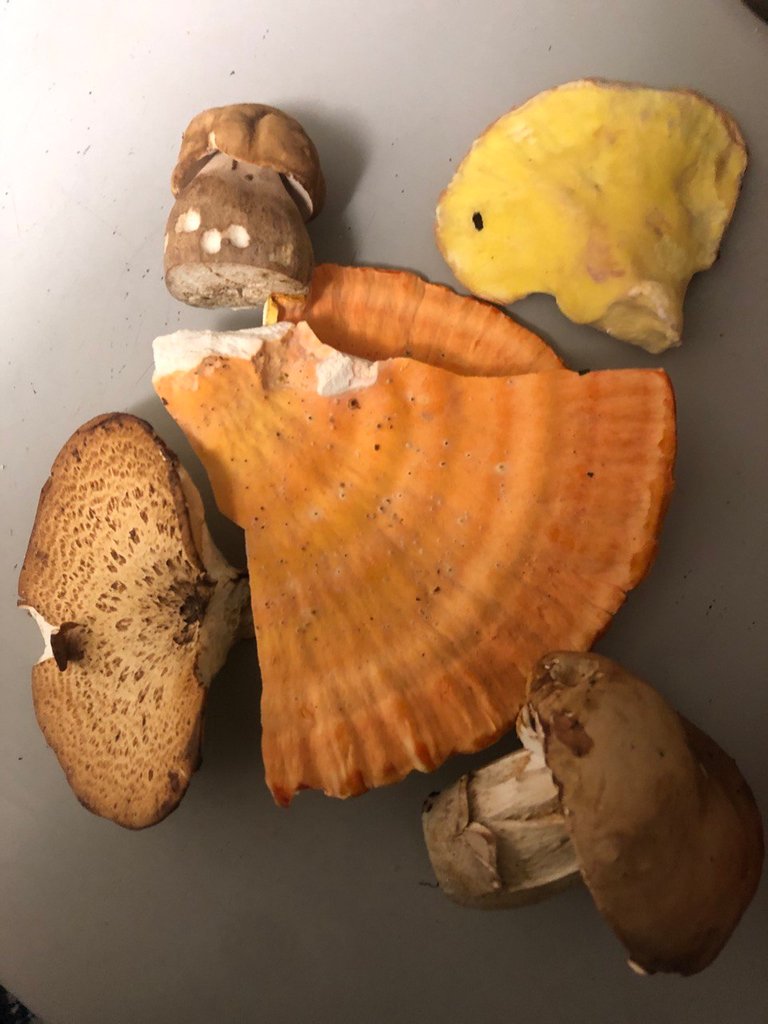
Picture of my Dinner, scavenging some edible mushrooms from the mycological identification evening.
| Class | Agaricomycetes |
| Division | Basidiomycota |
| Order | Boletales |
| Family | Boletaceae |
| Genus | Boletus |
| Scientific Name | Boletus reticulatus |
| Common Name | summer cep |
| Appearence | Key features that help distinguish Boletus reticulatus from Boletus edulis are the absence of a broadish pale band around the cap rim; an initially velvety cap surface, which often wrinkles and sometimes cracks with age; and a white or brown net-like pattern (reticulum) that usually extends well down the stem and sometimes right to the base. Stem shape is not a good indicator, as some are round and dumpy, as in the example shown above, while others are cylindrical - such a stem is illustrated in the table below. Source |
| Habitat | Boletus reticulatus grows on soil beneath mainly broadleaf trees, notably beech and oaks. This ectomycorrhizal species is found in broadleaf woodlands with beech and less often oaks, but occasionally it occurs under spruces, Boletus reticulatus fruits a little earlier than Boletus edulis. Most boletes, and all of those that commonly occur in Britain and Ireland, are ectomycorrhizal fungi, forming mutualistic relationships with the root systems of trees or shrubs. The fungi help the tree to obtain moisture and vital minerals from the soil, and in return the root system of the tree delivers energy-rich nutrients, the products of photosynthesis, to the fungal mycelium. Although most trees can survive without their mycorrhizal partners, boletes (and many other kinds of forest-floor fungi) cannot survive without trees; consequently these so-called 'obligately mycorrhizal' fungi do not occur in open grassland. Source |
| Odeur | Boletus reticulatus has an earthy smell and a pleasant mild taste. |
| Culinary | resembles the Boletus edulis but a little less intense in taste but more fresh, summer like |
| Medicinal | Medicinal BenefitsThe primary health benefit of eating king bolete is nutritional; like many mushrooms, they have no cholesterol or fat and are low in calories. The king bolete is a good source of protein, and is an excellent source of both dietary fiber and iron[iv]. It is also a good source of some minerals, such as selenium, manganese, and zinc, as well as B-complex vitamins[v]. While king boletes are generally a good source of antioxidants, their antioxidant and vitamin profiles tend to degrade somewhat if stored too long[vi]. Given the flavor, which is improved and intensified by drying[vii], this is a health food people want to eat. Extracts of the mushroom have been shown to kill colon cancer cells, but not normal colon cells, in cell cultures[viii]. The extract therefore has therapeutic potential but has not yet been tested in living subjects, nor has eating the whole mushroom been shown to effectively treat cancer. Another extract from king bolete reduced inflammation in mice who had been made asthmatic, and therefor has potential as a treatment for asthma[ix]. Whole king bolete is not generally used for any modern therapeutic purpose; the mushroom, or powders made from the mushroom, are sold for their flavor. Source |
Conclusions
It's been an interesting year and we're entering the second half. I hope to remember and memorise the latin names of mushrooms with these protocols. Also hope that these posts can be informative to others and become an addition to existing scientific literature and online references.
Thank you for reading
Best Wishes
Rane
Previous Posts on Mushrooms:

Posts about Wild Herbs:

Vanishing
Dong Chang 东厂
aka Rane

"The poet only asks to get his head into the heavens. It is the logician who seeks to get the heavens into his head. And then his head splits"
- G.K. Chesterton

Feel free to tip Wallets for support:
Bitcoin
3Mvofn1VynU168DuYtMsDqnUMSw7nQ8JEQ
Ethereum, XDAI, Polygon, Binance Smart Chain...: 0x0398edefB9d18A6a7c9fe573bdeedB7797283Ae5
Tezos:
tz1iSv5gWfPqUqaGChhfX8Vj3yquj36fad2Y
Cosmos:
cosmos1l66z8kxxgvftw7cprz5dlzvzm4tyefhrvm3w03
Solana:
9AmMfaerhNgsz2maByDUGrPMKYQRVeYQXJvCe9n48Fti
Terra
terra1m7q65zpa8y2zamjxqtnt43tprm36utkckdqf3a
Osmosis
osmo1l66z8kxxgvftw7cprz5dlzvzm4tyefhryqz7er


| 10 HP | 20 HP | 30 HP | 100 HP | 250 HP | 500 HP | 1000 HP | 2000 HP | 5000 HP |
|---|

Delegate to the Mind Force Gathering @mind.force and support more than artist on the hive blockchain.
| 10 HP | 20 HP | 30 HP | 100 HP | 250 HP | 500 HP | 1000 HP | 2000 HP | 5000 HP |
|---|


 Admin at the Hive Rocks Community
Admin at the Hive Rocks Community

